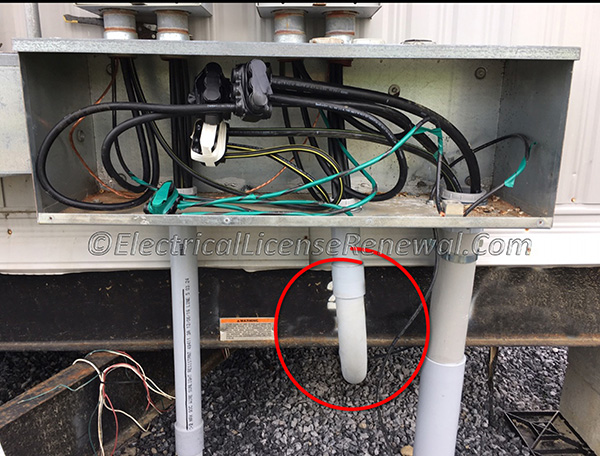550.15(H) Under-Chassis Wiring (Exposed to Weather).

Code Change Summary: The language in 550.15(H) requiring rigid metal conduit (RMC) or intermediate metal conduit (IMC) under a mobile home has been deleted.
The area under a mobile home may be a wet, damp, or dry location depending on how the mobile home has been set, if there is a skirt around the home base, or if a foundation wall has been built to permanently enclose the base of the home. A damp or wet location doesn’t always mean that the area is also exposed directly to weather.
Section 550.15(H) provides rules on under-chassis wiring exposed to weather. In the 2011 NEC®, this section required RMC or IMC to be used to enclose 120-volt or higher rated wiring methods under a mobile home if the wiring was exposed to moisture or physical damage. As well, the wiring inside the raceways was required to be suitable for wet locations.
In the 2014 NEC®, the text has been shortened and simplified. Now, “where outdoor or under-chassis line-voltage (120 volts, nominal, or higher) wiring is exposed to moisture or physical damage, it shall be protected by a conduit or raceway approved for use in wet locations or where subject to physical damage. The conductors shall be listed for use in wet locations”.
Below is a preview of the NEC®. See the actual NEC® text at NFPA.ORG for the complete code section. Once there, click on the “free access” tab and select the applicable year of NFPA 70 (National Electrical code).
2011 Code Language:
550.15(H) Under-Chassis Wiring (Exposed to Weather). Where outdoor or under-chassis line-voltage (120 volts, nominal, or higher) wiring is exposed to moisture or physical damage, it shall be protected by rigid metal conduit or intermediate metal conduit, except as provided in (1) or (2). The conductors shall be suitable for wet locations.
(1) Where closely routed against frames and equipment enclosures, reinforced thermosetting resin conduit (RTRC) listed for aboveground use, Type MI cable, electrical metallic tubing, or rigid polyvinyl chloride conduit (PVC) shall be permitted.
(2) Where extending vertically from a direct-burial depth of at least 457 mm (18 in.) below grade and terminated to a factory-installed conduit or enclosure, Schedule 80 PVC or RTRC listed for exposure to physical damage.
2014 Code Language:
550.15(H) Under-Chassis Wiring (Exposed to Weather). Where outdoor or under-chassis line-voltage (120 volts, nominal, or higher) wiring is exposed to moisture or physical damage, it shall be protected by a conduit or raceway approved for use in wet locations or where subject to physical damage. The conductors shall be listed for use in wet locations.